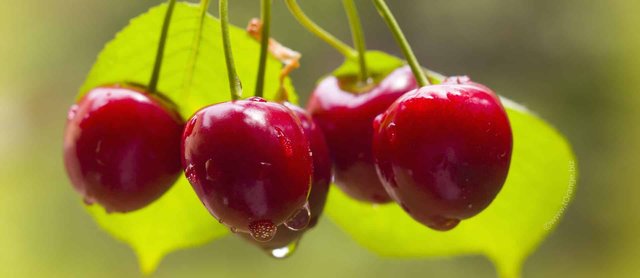Which are More Anti-Inflammatory: Sweet Cherries or Tart Cherries?

Haggis, the national dish of Scotland, is a savory pudding of heart, liver, lungs, and oatmeal traditionally stuffed inside of a stomach. When that stomach goes into our own stomach, our digestive enzymes and stomach acid have no problem digesting it away. How do our bodies digest the stomach lining of a sheep on our plate without digesting our own stomach linings? It’s meat and we’re meat. So, why don’t we digest our own stomach every time we eat?
Partly because we have an enzyme called cyclooxygenase (COX) that protects the lining of our stomach. There are two types, COX-1 and COX-2. COX-1 is thought to be the primary protector of our stomach, whereas COX-2 is an enzyme responsible for pain and inflammation. In fact, anti-inflammatory drugs like ibuprofen and naproxen work by inhibiting the COX-2 enzyme. But these are non-selective drugs; so, in addition to inhibiting COX-2 they also inhibit COX-1, which is trying to protect our stomach linings. Thus, although drugs like ibuprofen are great at relieving pain and inflammation, they kill thousands every year due to ulcerations through the stomach wall that result in life-threatening bleeding and perforation.
What are the risks on an individual level? On average, one in about 1,200 people who take this class of drugs for at least two months will die as a result. To put this into perspective, we can compare the death rate from anti-inflammatory drug side-effects to the risks associated with some well-known events. For example, it may be safer to go bungee jumping a few hundred times.
What we need is a selective COX-2 inhibitor, inhibiting the pain and inflammation of COX-2 without inhibiting the stomach protection of COX-1. We thought we got it with Vioxx, a blockbuster drug that brought in billions in profits before it started killing tens of thousands of peoples. Internal emails reveal how the drug manufacturer responded to the revelation that they were killing people: They drew up a list of doctors who were trying to warn people to “neutralize” them. If that didn’t work, they tried to discredit them (You can see the emails in the video, Anti-inflammatory Life Is a Bowl of Cherries).
We’re left then with two options: death from internal bleeding from one type of drug or death from side effects from another type of drug. If only there was some sort of natural COX-2 inhibitor. There is: cherries, which unlike ibuprofen suppress COX-2 more than COX-1.
In videos I did on insomnia and reducing muscle soreness (See Tart Cherries for Insomnia and Reducing Muscle Soreness with Berries), I talked about the benefits of sour cherries, the types of cherries used in baking. But sweet cherries, the kind you eat fresh, seem to be the MVP for COX-2 inhibition. Tart cherries had less of an effect. Regular red sweet cherries (Bing sweet cherries) were shown to have a greater anti-inflammatory activity than tart cherries. This makes sense since we think it may be the anthocyanin phytonutrients, and there are much more in sweet red cherries than in tart, and nearly none in yellow Rainer cherries.
Because fresh cherries have limited availability, what about other cherry products? In terms of anthocyanin phytonutrients, fresh is best, but frozen would appear to be the second-best choice.
Written By Michael Greger M.D. FACLM
Image Credit: Valdemar Fishmen / Flickr. This image has been modified.